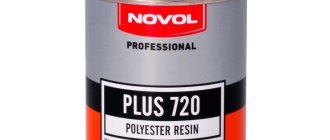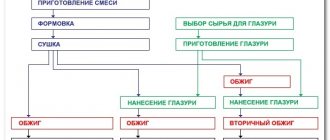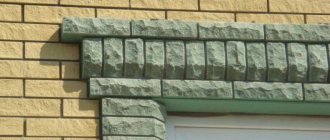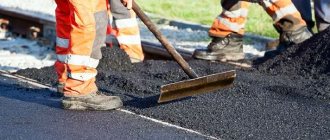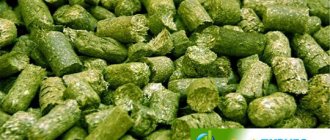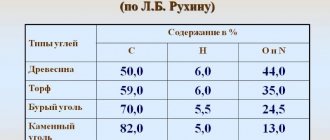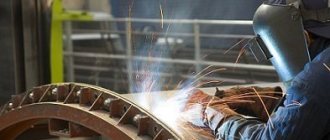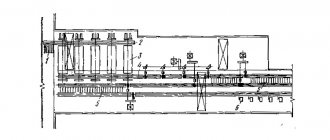A good alternative to traditional concrete paving stones is polymer sand tiles. Thanks to its high performance characteristics, the product easily copes with the tasks assigned to it. Finished elements are distinguished by their low weight, high strength and wear resistance, and a large selection of colors and shapes. In this regard, many entrepreneurs decide to build their business on the production of this paving surface. The article will describe polymer sand tiles and their production. We will also describe how to make polymer tiles at home.
Characteristics and advantages of polymer tiles
Polymer-sand paving products have the following composition:
- the main volume (3/4) is occupied by quartz sand;
- a quarter of the composition is high-pressure plastic;
- pigments.
Thanks to this composition, polymer raw materials are resistant to external influences and at the same time plastic, which facilitates the molding of the future product. The advantages of this material include the following:
- These sidewalk tiles will last up to thirty years.
- A special production technology allows us to produce a product that is resistant to temperature changes and its extreme values (withstands up to minus 70°C). The plastic content of the tile increases the moisture resistance of the product. Thanks to sand components, the paving surface is resistant to aggressive liquids and oils. The tile can withstand significant loads.
- During the manufacturing process, the product is given the desired color and shape, which guarantees a wide range of products. There is also a choice of surface options (matte, structured, glossy).
- Recycling PVC waste (plastic bottles, boxes, bags) solves the problem of their disposal.
- Light weight, strength and low abrasion.
- When exposed to sunlight, the product does not emit toxic fumes.
- Maintainability and easy installation.
- The coating does not accumulate dirt and is easy to clean.
- Possibility of making at home.
- Wide scope of use (as covering sidewalks and platforms in private households and in public places).
Polyethylene, sand and a little dye
The material from which Yenisei Polymer produces its products is the so-called polymer-sand composite.
One of its components is polyethylene waste: LDPE and HDPE (high and low pressure polyethylene) and stretch film (packaging polyethylene). The second component is ordinary river sand. Finally, 1% of the composite material is dye. As the company's production manager, Mikhail Kudelkin, recalls, at the start of the business, the main raw material - polyethylene waste - had to be obtained independently: collected literally anywhere, for example, taking used polyethylene covering for greenhouses from agricultural enterprises.
“There were no waste sorting plants in Krasnoyarsk at that time, so we had to get out of it ourselves. In general, this direction was just beginning to develop here, but there was already an understanding that it had prospects,” says Kudelkin.
Today the company no longer has problems with raw materials - used plastic is supplied to production from several waste sorting plants in Krasnoyarsk. However, the company had to debug this process on its own.
“I personally consulted all our waste sorting plants because they did not have an understanding of what kind of plastic was needed for our production. By that time, we already had experience in collecting and sorting such waste. Today, our company is actually the only consumer of polyethylene raw materials from Krasnoyarsk waste sorting plants,” says the head of production at Yenisei Polymer.
Material used
The production of polymer tiles requires the following raw materials:
- Crushed polymers are used as a binder; they occupy a quarter of the volume (usually polystyrene, polypropylene and LDPE are used);
- Sand acts as the main filler (it accounts for 75% of the total volume), choose well-sifted sand of medium coarseness (it must be washed and heated to high temperatures;
- inorganic pigments (iron oxide is used to obtain red, orange or brown tiles, chromium oxide is used to obtain a green coating, titanium dioxide produces white tiles).
In order to reduce the cost of purchasing raw materials, they practice making tiles from plastic bottles and other PVC products, for example, boxes or even film (but in the latter case, no more than half the volume of all polymers). Since the polymer has a neutral chemical composition, nitric acid acts as a solvent. To obtain a homogeneous mixture, the plastic is melted at a temperature of 180°C and high pressure. The melting process is called extrusion.
Production of luminous paving slabs
Necessary equipment
Making paving slabs from plastic bottles is impossible without the use of special equipment:
- plastic crushing machine;
- scales;
- melting apparatus;
- Press forms;
- press;
- extruder;
- When listing equipment for the production of polymer sand tiles, it is worth mentioning devices for cooling products;
- Forklifts will be needed to move finished products.
To produce plastic tiles at home, a molding press, a melting machine and an extruder are sufficient. If production is established on an industrial scale, then it will not be possible to do without a molding unit, a thermal screw mixing machine and a polymer crusher.
Important! When making tiles for your own needs, a drill with a mixing attachment is used to mix the components.
Also, to produce tiles from plastic bottles, you will need molds for pouring the mixture. They are bought on the Internet. There are molds made of plastic, rubber and fiberglass. Rubber molds are the most durable (withstand up to 500 cycles), but also expensive. Fiberglass products are suitable for large tiles, but require additional lubrication. Most often, ABS plastic molds are used.
Advice! Don't forget to buy molds for making curbstones.
Installation technology of polymer sand products
What do you need for installation?
Layer arrangement diagrams for different installation methods
The tiles can be laid on a sand cushion, on a mortar or on a cement-sand mixture. The third option seems preferable to me, because in my work I usually use it.
For installation you need the following equipment:
- Entrenching tools for excavation work (crowbar, shovel, pick).
- Rule for mixture.
- Master OK.
- Rubber hammer.
- Cords for marking the laying level.
- Level.
Tools that are useful for working with polymer sand products
The question of how to cut such products often becomes a reason for discussion. Manufacturers recommend using a grinder with a diamond blade, but for large-scale work you can use a regular machine for cutting paving slabs.
6 steps to properly paving sidewalks
The technology for laying polymer sand tiles involves a large amount of preparatory work. Instructions for constructing a track are presented in the table below:
| Illustration | Work stage |
| Step 1. Forming a pillow. We mark the base, after which we remove the fertile soil layer to a depth of at least 15–20 cm. Cover the surface of the area with a layer of sand about 10 cm. We moisten the sand and compact it. We lay geotextiles on top of the sand. | |
| Step 2. Tamping the base. We cover the geotextile with a layer of gravel, which will provide the base with the necessary stability. We compact the gravel and level it. This can be done manually, or using tamping machines. | |
| Step 3: Installing curbs. We install curb stones in the grooves along the edges of the site or path. We fix the curbs using cement mortar. | |
| Step 4. Distribution of the mixture. The cement-sand mixture for laying is poured onto a layer of gravel and carefully leveled using the rule. If necessary, we install beacon slats into the mixture to control the level. | |
| Step 5. Laying tiles. Place the tile on top of the mixture, carefully level it and press it down using a rubber mallet. The optimal gap between the tiles is about 4–5 mm. | |
| Step 6. Level control. We carefully control the plane of the path or platform with a level. If necessary, either set the tiles more firmly or add a small amount of laying mixture under the base. |
After installation is completed, the seams can be filled with a cement-sand mixture. Sprinkle the mixture over the surface and sweep away the excess with a brush or broom. After this, we moisten the surface of the tile: water will penetrate into the joints and ensure hydration of the cement.
Photo of the surface after filling the seams: excess composition must be removed
Technology for making tiles at home
The production of polymer-sand tiles is carried out in several ways:
- Method of hot pressing of a polymer mixture.
- Vibration casting using plasticizers.
Vibrocasting allows you to produce products with low porosity. The hot pressing method produces tiles with excellent technical and performance characteristics. In factory conditions, vibration casting and hot pressing technology are used simultaneously for the production of polymer sand coating.
Production of 3D paving slabs and coating advantages
Tiles for your own needs are produced directly on the street or in well-ventilated areas.
The manufacturing sequence is as follows:
- Plastic bottles are placed in an extruder to grind the raw materials. Old plastic boxes are sometimes used instead of bottles.
- The heated mixture is then poured into the melting apparatus. Moistened sand and dyes are also added there. As a result of mixing and simultaneous heating, a mixture of viscous consistency is obtained.
- This composition is poured into molds and pressed using special equipment.
- The finished products are cooled.
A wide range of
The product range currently includes about 30 items.
According to Mikhail Kudelkin, this is a solid list not only for the Krasnoyarsk, but also for the Russian market. “We constantly monitor the websites of similar industries operating in Russia, and we have come to the conclusion that not all enterprises have such an assortment. For example, in Krasnoyarsk there are a number of companies that, like us, process polyethylene waste, but they all specialize in one product - mainly paving slabs,” explains Kudelkin.
Now the company produces tiles, paving and terrace tiles of various colors and configurations, well hatches, septic tanks and bioseptic tanks, gutters and drainage grates. Relatively recent products include speed bumps and zebra crossings, for which the company has high hopes.
“The so-called IDN - artificial road bumps, which we produce from a polymer-sand composite, are significantly superior in wear resistance and durability to their rubber counterparts. In addition, they are cheaper to manufacture, install and maintain - it is enough to clean and renew the paint every two years.”
“To demonstrate the advantages of our products, we installed a zebra crossing on Shchorsa Street at our own expense. We hope that road workers and city authorities will appreciate our product,” says Mikhail Kudelkin.
This year the company also plans to expand the range of septic tanks: one and a half meter products will be added to wells with a meter diameter. Now the company is waiting for the production of the appropriate mold.
“For each new position it is necessary to order a special mold. This in itself is not cheap, and besides, the only enterprise that produces them is located in Samara. So, expanding the range is a considerable expense for the company every time, so we approach this issue carefully, first studying the customer’s needs for new products,” notes Kudelkin.

